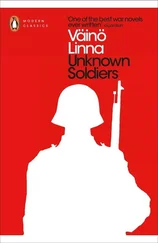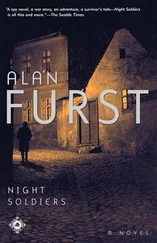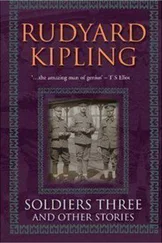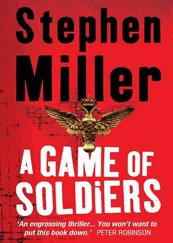Stephen Ambrose - Citizen Soldiers [Condensed]
Здесь есть возможность читать онлайн «Stephen Ambrose - Citizen Soldiers [Condensed]» весь текст электронной книги совершенно бесплатно (целиком полную версию без сокращений). В некоторых случаях можно слушать аудио, скачать через торрент в формате fb2 и присутствует краткое содержание. Жанр: История, на английском языке. Описание произведения, (предисловие) а так же отзывы посетителей доступны на портале библиотеки ЛибКат.
- Название:Citizen Soldiers [Condensed]
- Автор:
- Жанр:
- Год:неизвестен
- ISBN:нет данных
- Рейтинг книги:5 / 5. Голосов: 1
-
Избранное:Добавить в избранное
- Отзывы:
-
Ваша оценка:
- 100
- 1
- 2
- 3
- 4
- 5
Citizen Soldiers [Condensed]: краткое содержание, описание и аннотация
Предлагаем к чтению аннотацию, описание, краткое содержание или предисловие (зависит от того, что написал сам автор книги «Citizen Soldiers [Condensed]»). Если вы не нашли необходимую информацию о книге — напишите в комментариях, мы постараемся отыскать её.
Citizen Soldiers [Condensed] — читать онлайн бесплатно полную книгу (весь текст) целиком
Ниже представлен текст книги, разбитый по страницам. Система сохранения места последней прочитанной страницы, позволяет с удобством читать онлайн бесплатно книгу «Citizen Soldiers [Condensed]», без необходимости каждый раз заново искать на чём Вы остановились. Поставьте закладку, и сможете в любой момент перейти на страницу, на которой закончили чтение.
Интервал:
Закладка:
But as the bridge extended to midstream, the anchors couldn't hold the rafts in place. Barnes continued: "We discovered that the Navy had some LCVPs in the area and we requested their assistance. Ten came to the rescue. They were able to hold the bridge against the current until we could install a one-inch steel cable across the Rhine immediately upstream of the bridge, to which the anchors for each pontoon were attached. The remaining four-boat rafts were connected to the anchor cable, eased into position and connected to the ever-extending bridge until the far shore was reached.
"Finally, at 1900 March 11, twenty-seven hours after starting, the 969-foot heavy pontoon bridge was completed. It was the longest floating bridge ever constructed by the Corps of Engineers under fire. Traffic started at 2300, with one vehicle crossing every two minutes."
On March 15 the great structure of the Ludendorff Bridge, pounded unmercifully by first the Americans and then the Germans, sagged abruptly and fell apart with a roar, killing twenty-eight and injuring ninety-three engineers. By then the Americans had six pontoon bridges over the river and nine divisions on the far side. They were in a position to head east, then north, to meet Ninth Army, which would be crossing the Rhine north of Dtisseldorf. When First and Ninth armies met, they would have the German Fifteenth Army encircled.
Remagen was one of the great victories in the US Army's history. All that General Marshall had worked for and hoped for in creating this citizen army, happened. The credit goes to the men-Timmermann, DeLisio, Drabik, through to Hoge, Bradley, and Ike-and to the system the army had developed, which bound these men together into a team that featured initiative at the bottom and a cold-blooded determination and competency at the top.
UP NORTH Montgomery's preparations continued. Down south Patton's Third Army cleared the Saarland and the Palatinate. On the night of March 22-23, his 5th Division began to cross the river at Oppenheim, south of Mainz. The Germans were unprepared. Well before dawn the whole of the 5th and a part of the 90th Division were across.
At dawn German artillery began to fire, and the Luftwaffe sent twelve planes to bomb and strafe. The Americans pushed east anyway. By the afternoon the whole of the 90th Division was on the far side, along with the 4th Armoured. Patton called Bradley: "Brad, don't tell anyone, but I'm across."
"Well, I'll be.damned-you mean across the Rhine?"
"Sure am. I sneaked a division over last night."
The following day Patton walked across a pontoon bridge built by his engineers. He stopped in the middle. While every GI in the immediate area who had a camera took his picture, he urinated into the Rhine. As he buttoned up, Patton said, "I've waited a long time to do that."
THAT NIGHT Montgomery put his operation in motion. More than 2,000 American guns opened fire at 0100, March 24. For an hour more than a thousand shells a minute ranged across the Rhine. Meanwhile, 1406 B-17s unloaded on Luftwaffe bases just east of the river. At 0200 assault boats pushed off. Things went so well that before daylight the 79th and 30th divisions were fully across the river, at a cost of only thirty-one casualties.
At airfields in Britain, France, and Belgium, the paratroopers and glider-borne troops from the British 6th and the American 17th Airborne divisions began to load up. This was an airborne operation on a scale comparable with D-Day; on June 6, 1944, 21,000 British and American airborne troops had gone in, while on March 24, 1945, it was 21,680. There were 1,696 transport planes and 1348 gliders involved (British Horsa and Hamicar gliders, and American Wacos; all of them made of canvas and wood). They would be guarded on the way to the drop zone and landing zone (DZ and LZ) by more than 900 fighter escorts, with another 900 providing cover over the DZ. To the east 1,250 P-47s would guard against German movement to the DZ. while 240 B-24s would drop supplies. Counting the B-17s that saturated the DZ with bombs, there were 9,503 Allied planes involved.
A couple of B-17s were loaded with cameramen and assigned to fly around the DZ to take pictures. What concerned them was the flak: the Ruhr Valley and environs, Germany's industrial heartland, was the most heavily defended in the country. The transports and gliders would be coming in low and slow, beginning just after 1000 hours. The tow planes had two gliders each, instead of one as on D-Day, a hazardous undertaking even on an exercise.
The DZ was just north and east of Wesel. It took the air armada two and a half hours to cross the Rhine. Lieutenant Ellis Scripture was the navigator on the lead plane. It was a new experience for him to fly in a B-17 at 500 feet and 120 knots-perilously close to stall-out speed. Still, he recalled, "It was a beautiful spring morning and it was a tremendous thrill for us as we led the C 47s to the middle of the Rhine. The thrill was the climax of the entire war as we poured tens of thousands of troops across the final barrier."
Across the river the German antiaircraft guns sprang to life. The flak and ground fire were the most intense of any airborne operation of the war. One American veteran from the Normandy drop said there "was no comparison," while an experienced British officer said that "this drop made Arnhem look like a Sunday picnic."
Sergeant Valentin Klopsch, in command of a platoon of German engineers in a cow stable about ten kilometres north of Wesel, described the action from his point of view. First there was the air bombardment, then the artillery. "And now, listen," Klopsch said. "Coming from across the Rhine there was a roaring in the air. In waves aircraft were approaching at different heights. And then the paratroopers were jumping, the chutes were opening like mushrooms. It looked like lines of pearls loosening from the planes."
The Luftwaffe gunners went back to work, "but what a superiority of the enemy in weapons, in men, in equipment. The sky was full of paratroopers, and then new waves came in. And always the terrible roaring of the low-flying planes. All around us was turning like a whirl." The Americans attacked Klopsch's cowshed. His platoon fired until out of ammunition, when Klopsch put up a white flag. "And then the Americans approached, chewing gum, hair dressed like Cherokees, but Colts at the belt." He and the surviving members of his platoon were marched to a POW cage on a farm and ordered to sit. Decades later he recalled, "What a wonderful rest after all the bombardments and the terrible barrage."
The C-46s took a pounding from the flak. This was the first time they had been used to carry paratroopers. The plane had a door on each side of the fuselage, which permitted a fast exit for the troopers, but the fuel system was highly vulnerable to enemy fire. Fourteen of the seventy-two C-46s burst into flames as soon as they were hit. Eight others went down;
the paratroopers got out, but the crews did not.
For the gliders it was terrifying. The sky was full of air bursts; machine-gun bullets ripped through the canvas. The pilots-all lieutenants, most of them not yet eligible to vote-could not take evasive action. They fixed their eyes on the spot they had chosen to land and tried to block out everything else. Nearly all made crash landings amid heavy small-arms fire.
Private Wallace Thompson, a medic in the paratroopers, was assigned a jeep placed inside a glider, and rode in the jeep's driver's seat behind the pilots of a Waco. Through the flight he kept telling the pilots, Lieutenants John Heffner and Bruce Merryman, that he would much prefer to jump into combat. They ignored his complaints. As they crossed the river, the pilots told Thompson to start his engine so that as they landed, they could release the nose latches and he could drive out.
Читать дальшеИнтервал:
Закладка:
Похожие книги на «Citizen Soldiers [Condensed]»
Представляем Вашему вниманию похожие книги на «Citizen Soldiers [Condensed]» списком для выбора. Мы отобрали схожую по названию и смыслу литературу в надежде предоставить читателям больше вариантов отыскать новые, интересные, ещё непрочитанные произведения.
Обсуждение, отзывы о книге «Citizen Soldiers [Condensed]» и просто собственные мнения читателей. Оставьте ваши комментарии, напишите, что Вы думаете о произведении, его смысле или главных героях. Укажите что конкретно понравилось, а что нет, и почему Вы так считаете.
![Stephen Ambrose Citizen Soldiers [Condensed] обложка книги](/books/346737/stephen-ambrose-citizen-soldiers-condensed-cover.webp)








